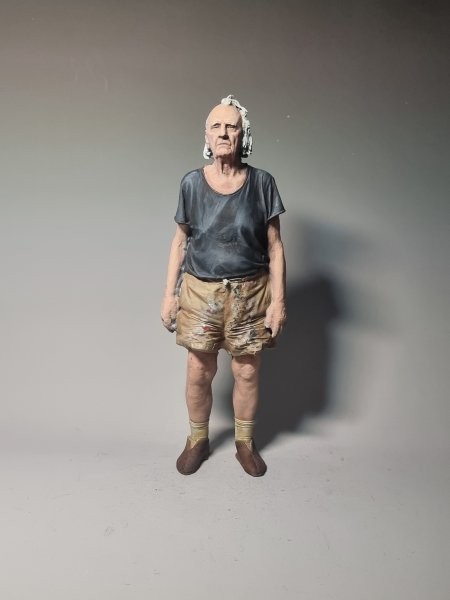
Ken Unsworth - Artist
Ken Unsworth (b. 1931) stands as one of Australia's most inventive and evocative sculptors, renowned for blending conceptual daring with visual poetry. Trained initially as a teacher, Unsworth later studied art at the University of Melbourne and honed his practice during the rise of conceptual art in the 1960s and 70s. His work defies easy categorisation, occupying the space between sculpture, performance, installation, and theatre.
Unsworth first gained public attention in the early 1970s with his performance pieces and installations that used the body and gravity as central motifs. In works such as Five Securing Positions (1975), he suspended his own body using ropes and pulleys, exploring the precarious balance between life, death, and restraint. These visceral performances were both physically intense and philosophically charged, challenging notions of permanence and control.
Throughout his career, Unsworth remained fascinated with gravity and the suspension of objects. His sculptural installations often appear to defy physics—grand pianos hang mid-air, rocks float improbably, and delicate structures seem moments away from collapse. One of his most iconic pieces, Suspended Stone Circle II (1988), features 103 river stones delicately suspended in space, held in perfect tension. It remains a landmark of Australian sculpture.
Beyond their technical brilliance, Unsworth’s works carry emotional depth. They address mortality, the body, memory, and the spiritual, often drawing from music, poetry, and personal loss. His later pieces—such as his large-scale installations at Carriageworks—combine sculpture with haunting video and sound to create immersive, meditative experiences.
Ken Unsworth has exhibited widely in Australia and internationally. His works are held in major public collections, including the Art Gallery of New South Wales and the National Gallery of Australia. Unsworth’s enduring legacy is one of poetic provocation—an artist unafraid to grapple with the elemental and the ephemeral.